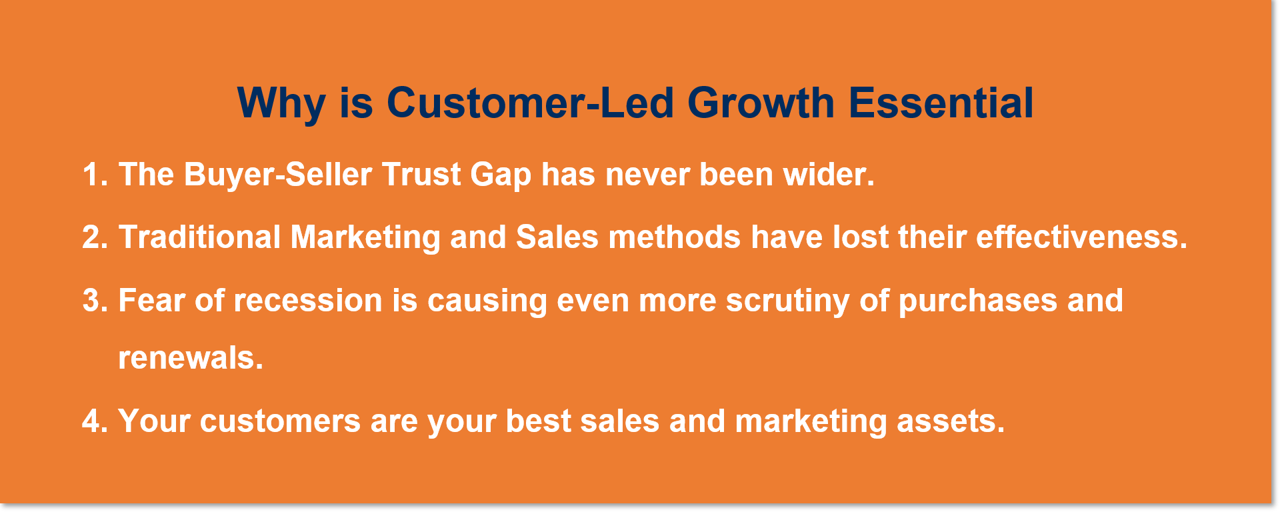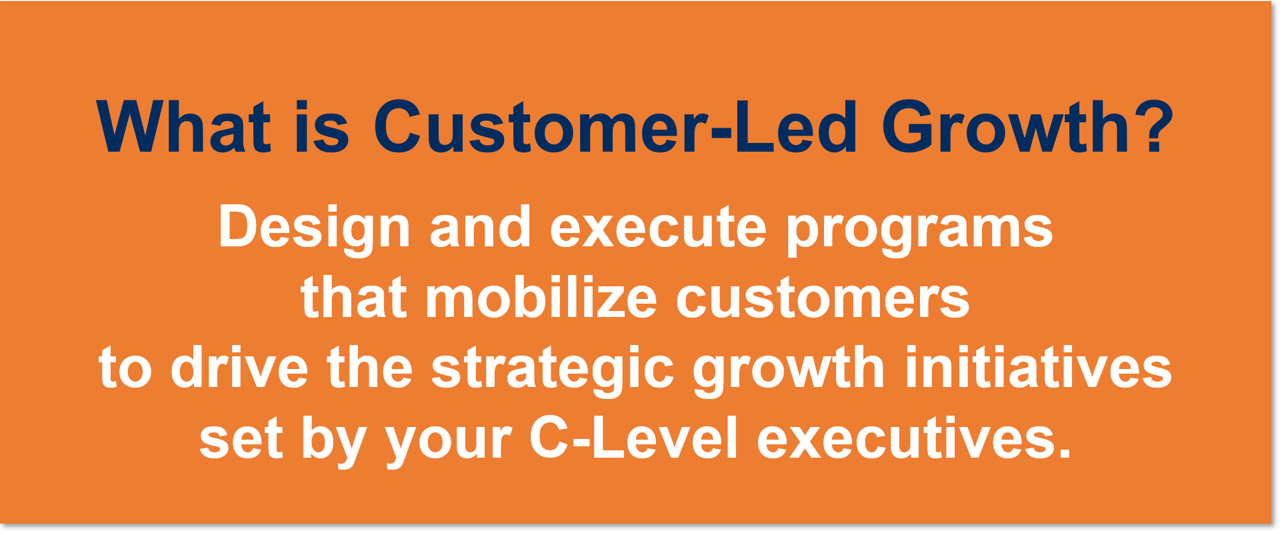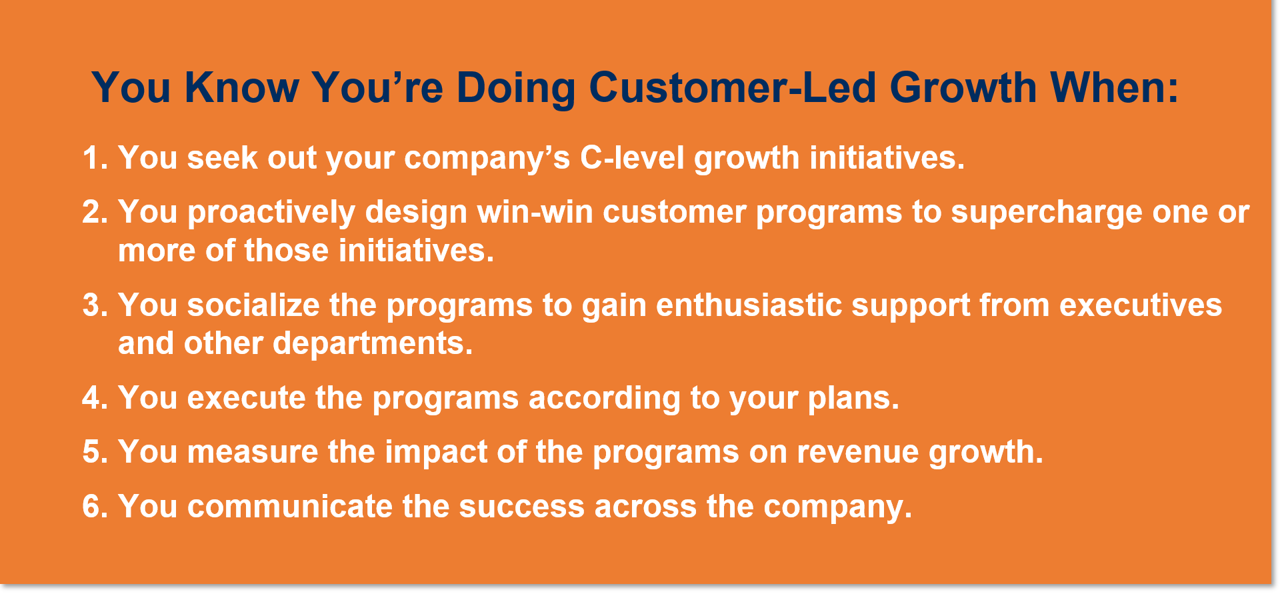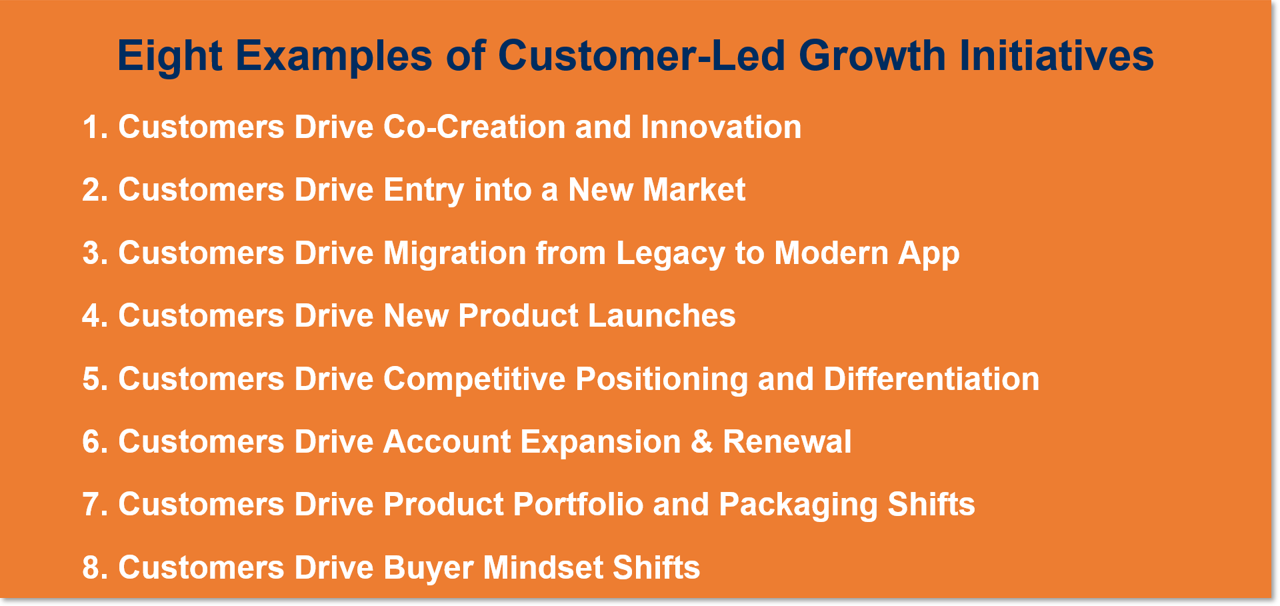1. The Buyer-Seller Trust Gap has never been wider
In my years of conducting buyer research at Forrester and for the Buyer Persona Institute, I have interviewed over 2,000 buyers across a wide variety of industries and markets. What every single interview has confirmed is that buyers don’t trust what your salespeople say or what your marketing materials claim. In fact, they don’t want to talk to your salespeople until they’re ready to place an order.
They want to hear from people just like them, in companies just like theirs, who have solved problems just like the ones they’re looking to tackle. Translation: they want to hear from your customers.
And they don’t want to read the classic “Challenge-Solution-Result” case studies that are full of marketing-speak about your product or watch highly-produced testimonial videos, embellished with music and B-roll video, that buyers told me they perceive as advertisements.
At every stage of their customer lifecycle, they want to hear the first-person, authentic voice of your customers, talking about things like how they:
- Decided that their organization couldn’t live another day with the status quo.
- Convinced their executives that it was time to make a change.
- Chose the approach to solving the problem.
- Evaluated and compared solution providers.
- Decided to select your solution.
- Overcame the challenges and pitfalls they encountered working with your firm.
- etc.
In other words, they want a crystal ball into what life is like as a customer before they buy. To move them, you need CLG.
2. Traditional Marketing and Sales methods have lost their effectiveness
What have companies like yours done in light of the Buyer-Seller Trust Gap? Recognizing that it is harder for salespeople to reach qualified buyers and for your marketing messages to break through the noise in the market, you’ve doubled down on your traditional Marketing and Sales tactics.
Your Sales leaders have hired more salespeople, reorganized your sales teams by vertical market, and brought in seasoned experts from each industry. You’ve invested in sales enablement portal technology to put the right sales tools into the hands of sales reps at the right time. But what good are these when buyers don’t want to talk to salespeople?
Your Marketing leaders have hired more Demand Gen people to build lead nurturing campaigns, more Product Marketing people to create data sheets and run product webinars, and more Content Marketing people to write keyword-rich white papers and blog posts. But what good are these tactics when buyers don’t trust your marketing messages and claims?
What’s the only thing that breaks through the noise, reaches your target buyers, overcomes their questions, fears, and doubts, and earns their trust? You’ve got it, the voice of your CUSTOMERS. You need CLG.
3. Fear of recession is causing even more scrutiny of purchases and renewals
You can’t look at a news site or channel without seeing a report about inflation, gas prices, and the $64,000 question: Are we heading for a global recession?
This fear has had a profound impact on business. The most headline-grabbing are those high-flying tech companies that hired more salespeople and marketing folks to do more of the traditional tactics that have lost their effectiveness. Remember them? They’re now laying those people off in large numbers.
What’s less visible, at least in terms of media coverage, is that technology buyers are being forced to apply even more scrutiny to purchases. They must show predictable business benefits, get more people internally on board, and prove that the company will be in dire straits if it doesn’t solve this problem right now.
What do they need to do this? They need even more real stories of your real customers who have tackled the same initiative and gotten real results. You need CLG.
It’s not just initial purchases, business leaders are also being forced to justify every renewal of technology they have. Is it being used? Is it having impact? Is it delivering on the promise we had when we brought it in? Can we survive the next year without it?
What do YOU need to do to make sure the answers to all these questions is YES? You need to make sure the practices, usage patterns and behaviors of your most successful customers are being adopted by all your customers. You need CLG.
4. Your customers are your best sales and marketing assets
Your customers have the keys to the kingdom. If you don’t believe me, answer these questions:
Question: Who knows best how to get an organization to realize that you can’t live another day without tackle the problem you exist to solve?
Answer: Your customers.
Question: Who knows best how to get all the key stakeholders aligned on making a change?
Answer: Your customers.
Question: Who knows best how to evaluate and compare the different solutions that exist in the market?
Answer: Your customers.
Question: Who knows best how your products should be used to achieve business impact?
Answer: Your customers.
Question: Who knows best how to overcome the challenges and pitfalls that customers inevitably encounter when implementing your solution?
Answer: Your customers.
I could go on but let’s stipulate that your customers are your best salespeople, and your best marketers.
It’s a Perfect Storm. The Trust Gap between buyers and sellers is wider than ever, traditional sales and marketing tactics are tuned out by your target buyers, fear of recession is causing even more scrutiny in buying decisions and renewals, and your customers are by far your best sales and marketing assets.
Let’s shift our focus to what 85% of the attendees at CustomerX Con 2022 did not have a clear understanding of. It’s time to talk about the definition of Customer-Led Growth.





